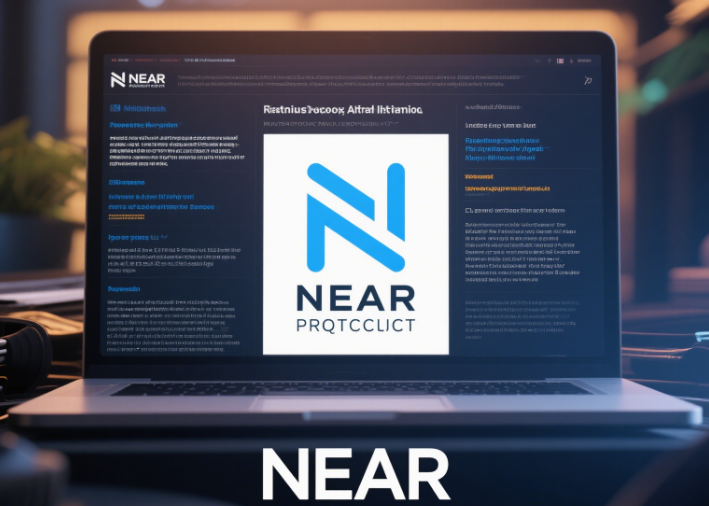In the rapidly evolving landscape of blockchain technology, NEAR Protocol stands out as a trailblazer, addressing critical challenges like scalability, developer accessibility, and user-friendliness. Built on a vision to democratize decentralized applications (dApps), NEAR has emerged as a leading Layer 1 blockchain platform, leveraging cutting-edge innovations to redefine what’s possible in Web3.
1. The Technology Behind NEAR Protocol
NEAR Protocol’s architecture is designed to overcome the limitations of traditional blockchains. At its core lies Nightshade, a sharding mechanism that enables near-linear scalability. Unlike other sharded networks, Nightshade dynamically adjusts the number of shards based on network demand, ensuring efficient transaction processing without compromising security. This allows NEAR to handle up to 100,000 transactions per second (TPS) with near-instant finality and negligible fees (typically under $0.01) .
Another game-changing feature is Chain Abstraction, which simplifies cross-chain interactions. NEAR’s Rainbow Bridge connects seamlessly with Ethereum, enabling users to transfer assets between networks effortlessly. Additionally, Chain Signatures and Intents empower smart contracts to execute multi-chain transactions, paving the way for interoperable decentralized finance (DeFi) and AI applications .
2. Developer-Friendly Ecosystem
NEAR prioritizes developer productivity by supporting popular programming languages like Rust, AssemblyScript, and TypeScript. Its WebAssembly (Wasm) compatibility allows developers to build smart contracts using familiar tools, lowering the barrier to entry. The platform also offers pre-built templates and SDKs, streamlining the dApp development process .
Key infrastructure projects like Aurora (an Ethereum Virtual Machine-compatible layer) and Pagoda (a developer toolkit) further enhance NEAR’s appeal. Aurora enables Ethereum developers to port their projects to NEAR with minimal changes, while Pagoda provides tools for testing, debugging, and deploying dApps efficiently .
3. User-Centric Design
NEAR’s focus on usability extends to end-users. Unlike traditional blockchains that require complex cryptographic addresses, NEAR introduces human-readable account names (e.g., “alice.near”), making it easier for users to interact with dApps. The platform also supports meta-transactions, allowing users to sign transactions without holding NEAR tokens, a feature that attracts non-crypto-native users .
The NEAR Wallet ecosystem, including apps like Here Wallet and Meteor Wallet, offers intuitive interfaces for managing assets, participating in governance, and accessing dApps. These wallets integrate seamlessly with NEAR’s infrastructure, ensuring a frictionless user experience .
4. Decentralized Governance and Community
NEAR Protocol operates on a decentralized governance model, where token holders (NEAR stakeholders) vote on network upgrades and funding proposals. The Near Infrastructure Committee (IC), composed of ecosystem leaders, oversees critical projects like wallet development, RPC services, and analytics tools. This community-driven approach ensures transparency and inclusivity, fostering innovation and long-term sustainability .
Notably, NEAR’s governance framework emphasizes weighted voting and Sybil resistance, ensuring that decisions reflect the collective will of the community rather than centralized entities. This model has attracted over 15 million users and 800+ dApps across DeFi, NFTs, gaming, and AI .

5. Strategic Partnerships and Industry Impact
NEAR Protocol has forged alliances with major players to accelerate adoption. In 2025, partnerships with DWF Labs and Render aim to advance decentralized AI and GPU computing, while collaborations with Alibaba and Fireblocks drive enterprise integration .
The platform’s $100 million Entertainment Fund supports projects in media, gaming, and social-fi, while its AI Incubator Program nurtures startups building user-owned AI solutions. These initiatives position NEAR as a hub for innovation, attracting developers and investors alike .
6. Market Outlook and Price Prediction
NEAR’s native token, NEAR, has gained traction as a store of value and governance asset. Analysts project a bullish trajectory for 2025, with price forecasts ranging from $5.37 to $11.09 . Long-term predictions suggest NEAR could reach $44 by 2030 and $6,604 by 2050, driven by institutional adoption and technological advancements .
Factors contributing to this optimism include NEAR’s Nightshade 2.0 upgrade (expanding shards to 8), AI-focused ecosystem growth, and cross-chain interoperability with networks like Solana and Cosmos .
7. The Future of NEAR Protocol
NEAR’s roadmap for 2025 includes:
- Enhanced AI Integration: Developing decentralized AI infrastructure and user-owned AI agents.
- Cross-Chain Expansion: Integrating with Cosmos and Polkadot via ZK-proof bridges.
- Mainstream Adoption: Collaborating with D3 to secure the .near top-level domain, bridging Web2 and Web3 .
As blockchain technology continues to mature, NEAR Protocol’s focus on scalability, usability, and innovation positions it as a leader in the next wave of decentralized applications.
For the latest insights on NEAR Protocol and other blockchain projects, visit youccet.com—your trusted source for crypto market analysis and updates.
Conclusion
NEAR Protocol is not just another blockchain; it’s a movement toward a more accessible, scalable, and decentralized future. By combining cutting-edge technology with user-centric design, NEAR is breaking down barriers to Web3 adoption, empowering developers and users to shape the next generation of the internet.
Stay ahead of the curve with Bitora’s comprehensive coverage of NEAR Protocol and the broader crypto landscape.









Leave A Reply